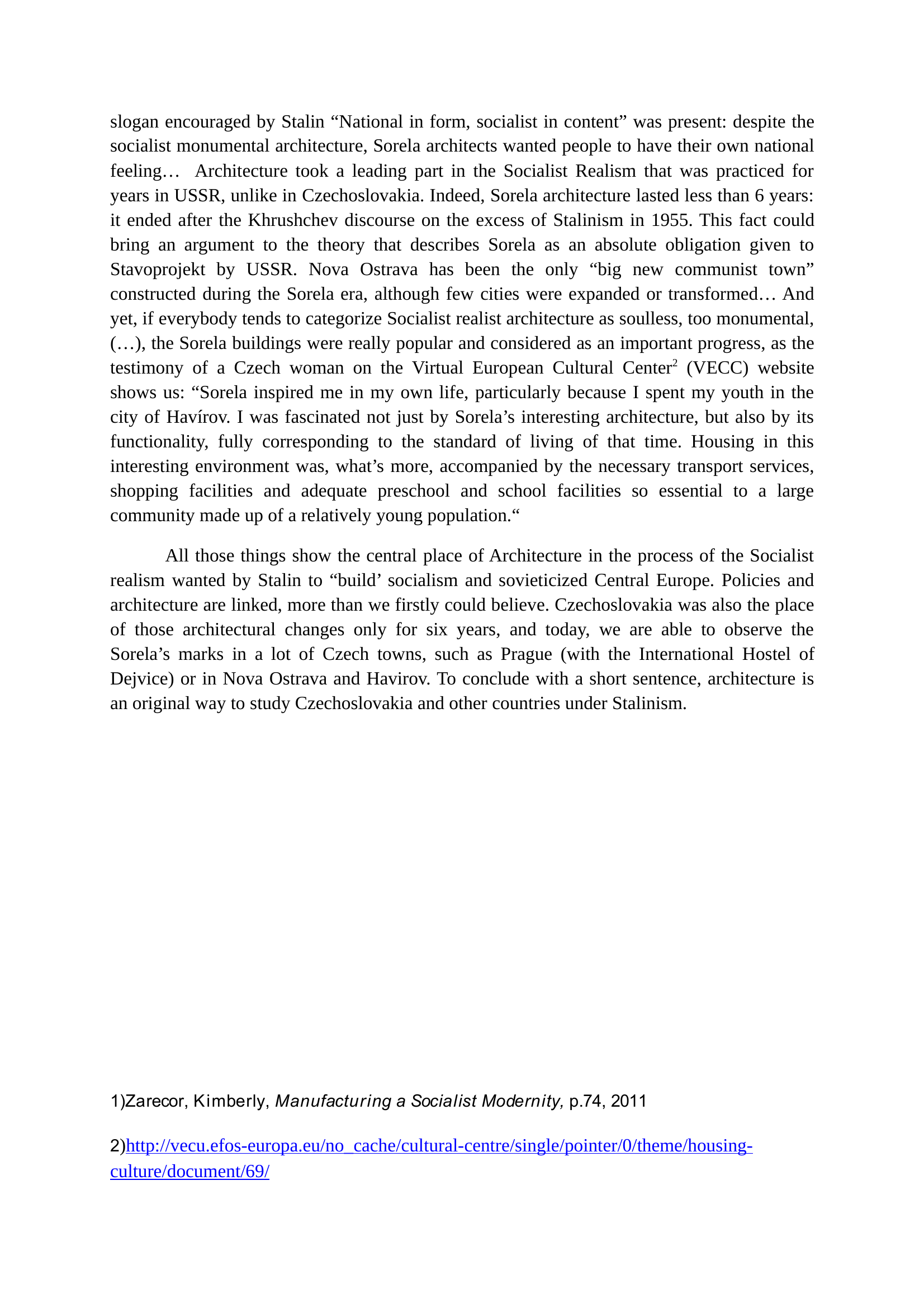Sorela & Stalinist dictatorship in Czechoslovakia (History & Architecture)
Publié le 10/06/2013

Extrait du document


«
slogan encouraged by Stalin “National in form, socialist in content” was present: despite the
socialist monumental architecture, Sorela architects wanted people to have their own national
feeling… Architecture took a leading part in the Socialist Realism that was practiced for
years in USSR, unlike in Czechoslovakia.
Indeed, Sorela architecture lasted less than 6 years:
it ended after the Khrushchev discourse on the excess of Stalinism in 1955.
This fact could
bring an argument to the theory that describes Sorela as an absolute obligation given to
Stavoprojekt by USSR.
Nova Ostrava has been the only “big new communist town”
constructed during the Sorela era, although few cities were expanded or transformed… And
yet, if everybody tends to categorize Socialist realist architecture as soulless, too monumental,
(…), the Sorela buildings were really popular and considered as an important progress, as the
testimony of a Czech woman on the Virtual European Cultural Center 2
(VECC) website
shows us: “Sorela inspired me in my own life, particularly because I spent my youth in the
city of Havírov.
I was fascinated not just by Sorela’s interesting architecture, but also by its
functionality, fully corresponding to the standard of living of that time.
Housing in this
interesting environment was, what’s more, accompanied by the necessary transport services,
shopping facilities and adequate preschool and school facilities so essential to a large
community made up of a relatively young population.“
All those things show the central place of Architecture in the process of the Socialist
realism wanted by Stalin to “build’ socialism and sovieticized Central Europe.
Policies and
architecture are linked, more than we firstly could believe.
Czechoslovakia was also the place
of those architectural changes only for six years, and today, we are able to observe the
Sorela’s marks in a lot of Czech towns, such as Prague (with the International Hostel of
Dejvice) or in Nova Ostrava and Havirov.
To conclude with a short sentence, architecture is
an original way to study Czechoslovakia and other countries under Stalinism.
1)Za recor, K i mberly, Manufactu r i ng a Socia l ist Modern i ty, p.74, 2011
2 ) http://vecu.efos-europa.eu/no_cache/cultural-centre/single/pointer/0/theme/housing-
culture/document/69/.
»
↓↓↓ APERÇU DU DOCUMENT ↓↓↓
Liens utiles
- Roman Art and Architecture - history.
- Greek Art and Architecture - history.
- Roman Art and Architecture - History.
- Egyptian Art and Architecture - USA History.
- Greek Art and Architecture - USA History.

































